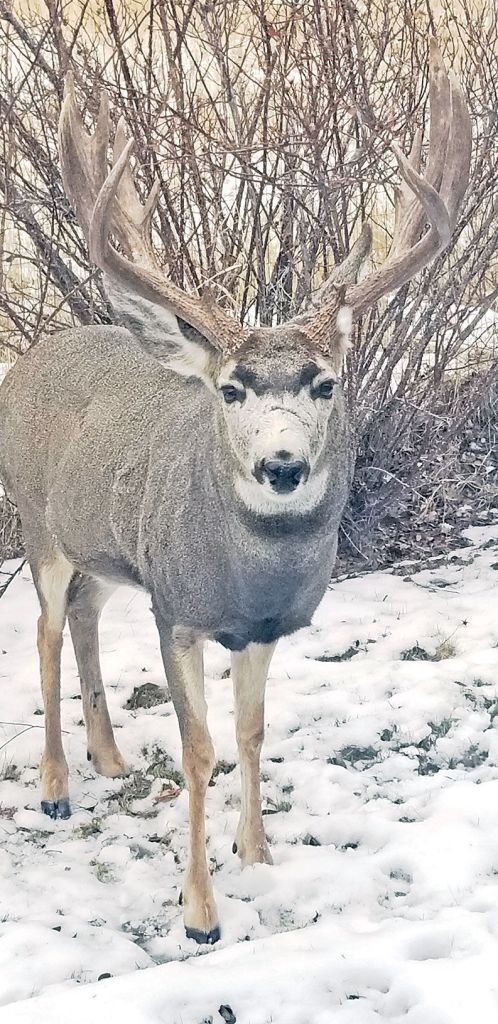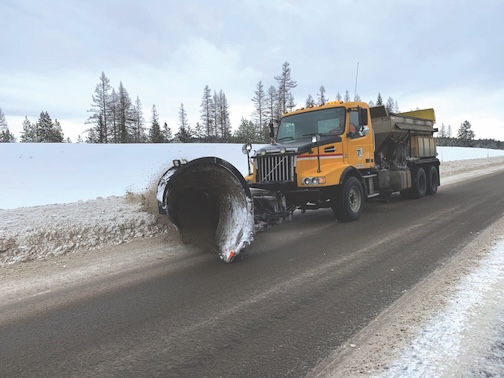Meat of hunting season under way
Published 8:33 am Thursday, August 26, 2021

- A mule deer buck in Baker County.
Oregon’s big game hunting season is already under way, with bear, antelope and some other hunts ongoing, but the meat of the season begins today with the start of archery season.
Trending
The 2021 season is noteworthy for one significant change — all archery deer hunting in Eastern Oregon is controlled this year.
The Oregon Fish and Wildlife Commission decided last year to end the general archery season for Eastern Oregon, in which there was no limit on tags, and archers could hunt in any legal area. But this year bowhunters had to apply for a deer tag for a specific unit, the same system that applies for rifle seasons.
Eastern Oregon controlled archery deer tags are not valid in the Western Oregon general archery season. Eastern Oregon controlled archery deer tags are valid only in the unit or units identified for each hunt.
Trending
The Fish and Wildlife Commission is considering making a similar change for archery elk hunting starting in 2022, although some units would retain general seasons based on the current proposal. Another change affects bear hunters.
Due to COVID-19-related office closures, bear hunters are temporarily not required to check-in their animal at an Oregon Department of Fish and Wildlife (ODFW) office, though they do still need to report basic information about their harvest within 10 days. Hunters need to call the field or district office closest to their house and report their name, ODFW ID number, date of harvest, location of harvest (wildlife management unit), sex of animal and confirmation number for electronic tags. Or, they can email all the above information to ODFW.WildlifeInfo@state.or.us.
ODFW has released a hunting forecast for this fall.
The agency predicts that hunters might see a few more yearling bucks thanks to a mild winter and good overwinter survival. Early season hunters will be challenged by the dry conditions, however.
Beulah, Sumpter, Keating, Pine Creek, Lookout Mt. units
Fire conditions are extreme and hunters should check with local land managers to find out the latest conditions, as they can change rapidly. The Wallowa-Whitman and Umatilla national forests eased public use restrictions to Phase B starting today. That means campfires are allowed in campgrounds and other designated recreation areas, as well as in wilderness areas.
On the Malheur National Forest, Phase C restrictions, which prohibit all campfires, remain in effect.
DEER
Overwinter survival was fair in Baker County with an average fawn ratio of 30 per 100 adults counted in the spring of 2021. Animals will be the most active early in the morning and late in the afternoon when temperatures cool off. Hunters should concentrate their efforts in areas of good forage near north slopes that provide good bedding cover.
The Beulah unit is still recovering from the winter of 2016-17 with a fawn ratio of 24 per 100 adults. The buck ration is 14 per 100 does, which is just below the buck management objective of 15 per 100 does. As a result, tag numbers will remain at lower levels into the future to allow population to recover. With last year’s tag cuts, hunter success was 35 percent, which was down 10 percent from the previous year. There will be a few more yearling bucks available for harvest this year, but only a small increase.
ELK
Elk herds in Baker County came out of the winter in good shape. Bull ratios are at or near management objective and calf ratios were good in all units. Elk populations in the Keating, Pine Creek and Lookout Mountain units continue to grow and offer good opportunity for hunters. For the best chance at tagging an elk, get as far away from roads as possible, perhaps by hunting in one of the cooperative Travel Management Areas. Dry conditions can make hunting difficult. Animals will be the most active early in the morning and late in the afternoon when temperatures cool off. Hunters should concentrate their efforts in areas of good forage near north slopes that provide good bedding cover.
Starkey, Catherine Creek, East Mt. Emily units
Deer populations are below management objective in all units. Catherine Creek buck ratios are climbing and have been over the past three years. Hunters may encounter more yearling bucks this season due to an increase in fawn survival over the winter. Starkey unit buck ratios are below management objectives and have been for several years; fawn survival over winter was average. East Mount Emily buck numbers are stable and above management objectives.
White-tailed deer numbers remain stable across the county. A disease outbreak (EHD) in Northeastern Oregon had little impact on the white-tailed deer in Union County. The Grande Ronde muzzleloader hunt is a great opportunity for hunters to harvest an animal.
ELK
Elk numbers area stable throughout Union County. Over winter survival was high with good calf numbers overall. Bull ratios have been low in the Starkey Unit but are above average in the Catherine Creek Unit. Mt. Emily Unit continue to provide trophy quality hunting opportunity.
The Starkey Unit Travel Management Area is a great place to start for big game hunters new to the area; maps are available online or at the La Grande office. General spike season is a great time to elk hunt in the Starkey unit without the crowds of first season. Look for elk in the steep terrain of the Starkey and Catherine Creek units. The Access and Habitat program continues to provide genuine hunting opportunities within Union County and should not be overlooked.
Wenaha, Sled Springs, Chesnimnus, Snake River, Minam, Imnaha units
DEER, ELK
While mule deer populations are still low, white-tailed deer have had better fawn survival and buck season is expected to be fair in all units. Elk populations are doing well, and hunters can expect good prospects for bull hunting in all units. Deer populations are below management objective in all units, while elk populations are above in all units except the Wenaha and Snake River.
Archery season is expected to be warm and dry, making hunting conditions a little difficult. Archers in the Sled Springs unit need to be aware of motor vehicle restrictions and no camping restrictions on Hancock Timber property during fire season.
The district has not detected any drop in deer or elk populations as a result of wolf activity.
BEAR, COUGAR
Cougar and bear numbers are good throughout the district. Fall bear hunters should concentrate efforts around fruit orchards, and in draw and stream bottoms as bears will be using these areas feeding on berries. Cougar hunting is best sitting on a fresh cougar kill carcass, or calling with lots of patience.
Walla Walla, Mt. Emily, Ukiah, eastern portion of Heppner, northern Columbia Basin units
DEER, ELK
Mule deer survival rates were good considering the long winter we experienced here is Umatilla County. However, mule deer numbers are still below management objectives (MOs) in all units, but the buck:doe ratios are all at or above MO. The Umatilla National Forest has recently opened the forest in the Ukiah and Mt. Emily Units, but due to ongoing fire issues, Umatilla lands in the Walla Walla and Wenaha units are closed to all entry.
In the fall of 2019, Umatilla County experienced a Epizootic Hemorrhagic Disease (EHD) outbreak in low-elevation areas, but as expected we are seeing a large increase in white-tailed deer which should help in hunter success.
Hunters will find very similar elk numbers to previous years. Overwinter survival was good with calf ratios remaining low but stable, ranging from 16 to 18 calves in all three units. Both spike and branch bull hunters should expect good potential for this year’s hunts throughout the district.
Due to extremely hot and dry conditions in the past few months, forage and water conditions for both deer and elk are poor at best, resulting in animals not being widely dispersed. Expect daily movements will be restricted to a few hours in the morning and early evening. However, hunters should continue to focus on north facing slopes where good feeding and bedding areas are more prevalent.
BEAR, COUGAR
Getting a spring bear tag in the Umatilla District is not easy, so the fall general season is your chance to hunt bear in Umatilla Country. Look in hawthorn and elderberry concentrations to find them; early on they will be on the edges of clearcuts and clearcuts near berry crops on high country. The best bear hunting is north of I-84 in Mt Emily and Walla Walla units.
Cougar populations are healthy; carry a tag while hunting deer or elk as you may get the chance to take a cougar while you’re at it. The best cougar hunting will be north of I-84 in the Mt. Emily and Walla Walla Units. The Ukiah Unit has a lower density of cougars than the two northern units, but has been increasing in density for the last few years. Still, hunters will have good chance of encountering a cougar there as well.









